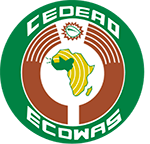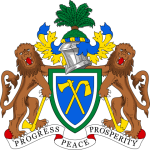The Gambia
Member States

The digital ecosystem in The Gambia is still in its early stages of development but has been showing signs of growth in recent years. Here’s an overview of the current digital landscape in The Gambia:
1. Connectivity and Infrastructure
– Internet penetration: Approximately 30-35% of the population
– Mobile network: 3G and 4G available, mainly in urban areas
– Fiber optic: Limited, primarily in the Greater Banjul Area
2. Mobile Technology Adoption
– High mobile phone penetration
– Growing smartphone usage, particularly among urban youth
– Mobile money services gaining popularity
3. Tech Sector
– Emerging startup ecosystem, centered mainly in Banjul and Serekunda
– A few tech hubs and innovation centers (e.g., StartUp Incubator Gambia)
– Limited access to funding and technical expertise for startups
4. E-commerce and Fintech
– E-commerce sector in early stages of development
– Growing adoption of mobile money and digital payment solutions
– Challenges in logistics and digital payment infrastructure
5. Government Policy
– National Digital Transformation Strategy 2020-2024
– Efforts to improve ICT infrastructure and promote digital literacy
– Focus on e-government initiatives to enhance public service delivery
6. Challenges
– Significant digital divide between urban and rural areas
– Unreliable electricity supply affecting digital service provision
– Limited digital literacy among the general population
– Need for more robust ICT policies and regulations
7. Education and Digital Skills
– Growing emphasis on ICT education in schools and universities
– Limited availability of advanced digital skills training programs
– Some initiatives to promote coding and tech entrepreneurship among youth
8. Innovation and Research
– Emerging focus on developing solutions for local challenges
– Limited R&D infrastructure and investment in the tech sector
9. Social Media and Online Content
– Increasing social media usage, particularly among urban youth
– Limited local digital content creation and online media industry
10. Sector Applications
– Agriculture: Potential for AgriTech solutions, but few implementations
– Health: Some initiatives in mobile health and telemedicine
– Education: Growing interest in e-learning platforms
11. Cybersecurity
– Developing cybersecurity framework
– Need for increased awareness and capacity building in digital security
12. Telecommunications Market
– Several mobile operators competing in the market (e.g., Africell, QCell)
– Efforts to improve telecom infrastructure and services
Key strengths and opportunities
– Young population eager to adopt digital technologies
– Government recognition of the importance of digital transformation
– Potential for digital solutions in key sectors like agriculture and tourism
Significant challenges
– Limited digital infrastructure, particularly in rural areas
– Low digital literacy rates
– Need for more investment in the tech sector and digital skills development
– Small market size limiting scalability of local digital solutions
The Gambia’s digital ecosystem is at a relatively early stage compared to some of its West African neighbors. However, there is growing recognition of the potential of digital technologies to drive economic growth and improve service delivery. The country is working to overcome challenges posed by limited infrastructure and the need for more comprehensive digital policies.
Key areas of focus for development include
– Expanding mobile internet coverage and adoption
– Improving digital literacy and skills across the population
– Encouraging local tech entrepreneurship and innovation
– Implementing e-government services to improve efficiency and transparency
– Leveraging digital solutions for key sectors like agriculture, tourism, and education
International organizations and partnerships play a crucial role in supporting The Gambia’s digital development, providing expertise, funding, and capacity-building initiatives.
Ministry of Communications & Digital Economy

